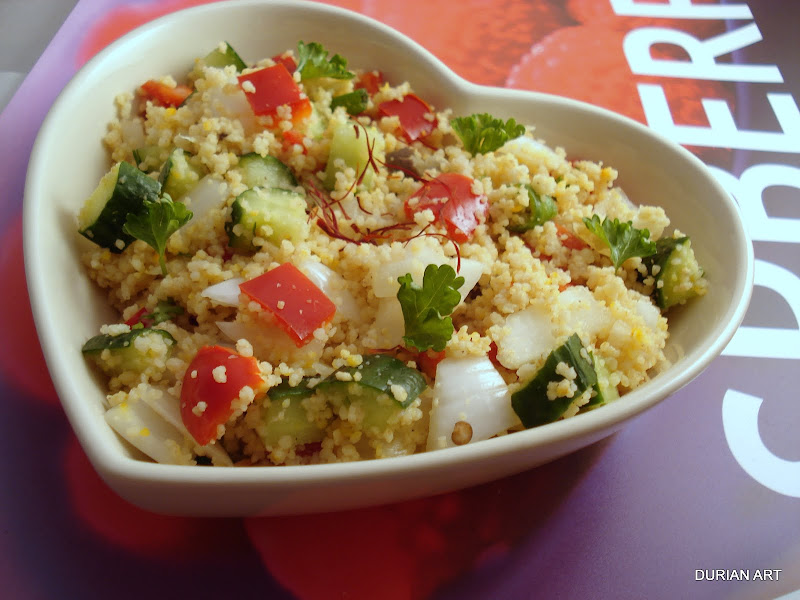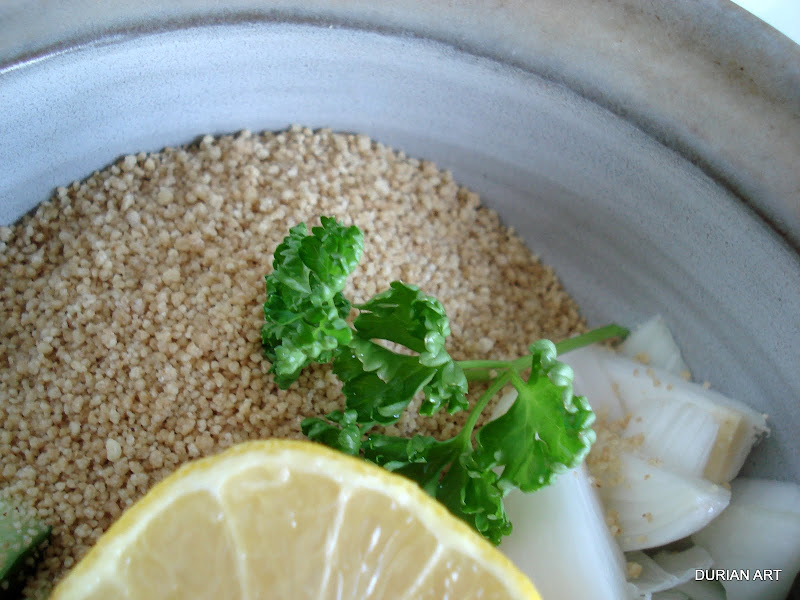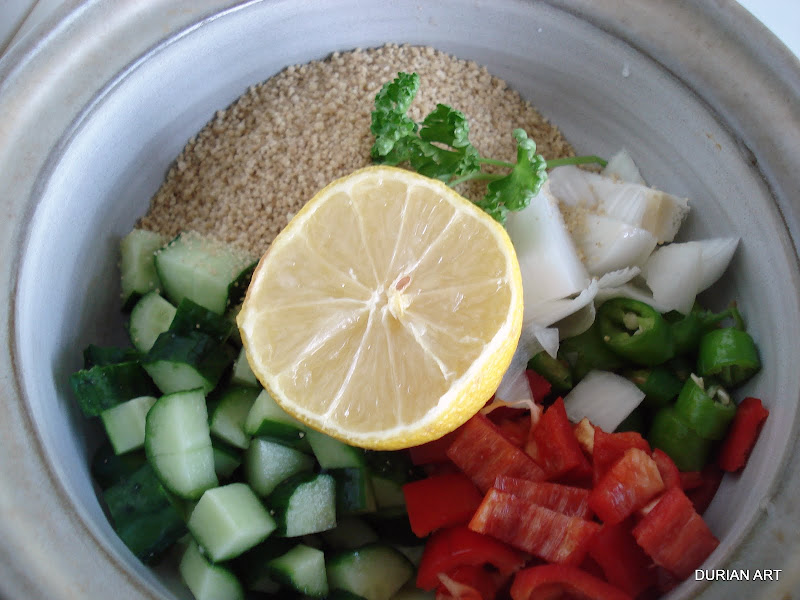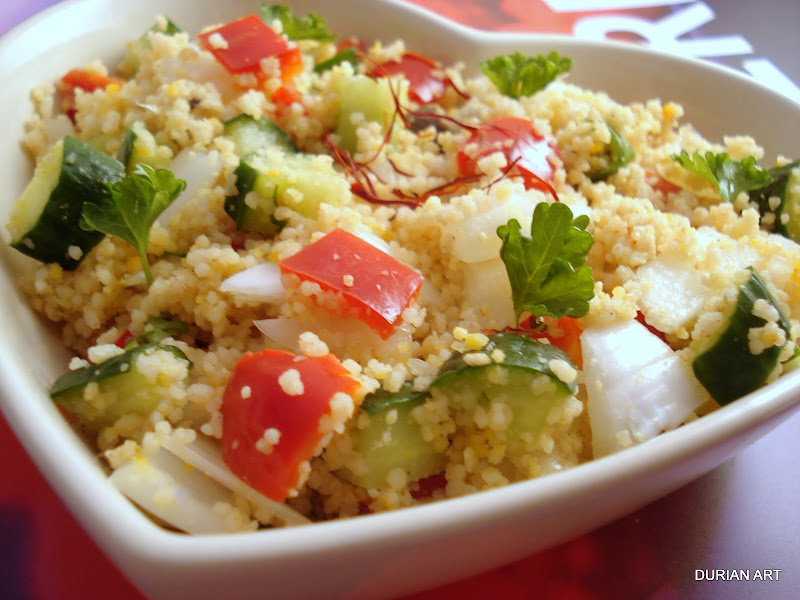

At some point of history, I can’t really tell when, couscous arrived in France. Maybe birds brought a seed and dropped it there.
Now it’s a classic. In Summer, it becomes taboulé. Beware of the spelling. The difference is not an innocent consequence of my random spelling…well it could, but not in this case.

Classsical tabouleh from Middle-East is mainly composed of bulgur, lots of herbs, a little onion, and lemon juice. It’s green.
In France, taboulé is any cold couscous dish. My compatriots have add anything to couscous. Really. From tomato sauce to dices of ham, including sweet corn. Sometimes, it’s good. Sometimes less.


Today, I added lots of fresh veggies, which is very good.

Whole wheat couscous, young onion, green pepper, red pepper, cucumber, parsley, lemon juice.

I mixed the ingredients, added a few slices of black olive, saffron, salt. I use 1/2 a lemon for the juice, then I complete with water if the veggies are not very juicy. To much lemon is not good.

Tatata ! 8 hours later, it’s done. I just stirred and added a little fruity olive oil. The saffron didn’t give much color, but tasted great.







